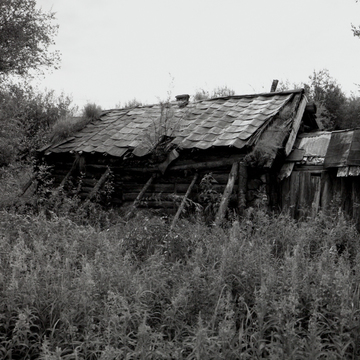The Minano cabin is still standing, but half of its roof has caved in. Built after the first boom, the Minano cabin dates from about 1915. It is constructed of round logs, saddle notched at the corners, with dimensions of approximately 16 feet by 22 feet. The roof is constructed of sod on planks; on top of this more planks and flattened fuel cans were laid. There is an arctic entry, 7 feet by 7 feet, on the front and a root cellar under the building. There is also an unusual amount of whipsawn lumber, seen in the flooring, walls of the cellar, and ceiling; this may have been removed from other buildings in the ghost town of Coldfoot.
James Minano was a Japanese trader who married Sucklarlalook, an Eskimo from Barrow. They came down to Coldfoot about 1903, raising a family and cultivating extensive gardens in the more than twenty hours of sunlight on a summer day.
Across the road is a small shed constructed of squared logs nailed into corner boards. It, too, has a gable roof covered with flattened fuel cans. Without a chimney or sod roof, it was probably constructed as an outbuilding.








